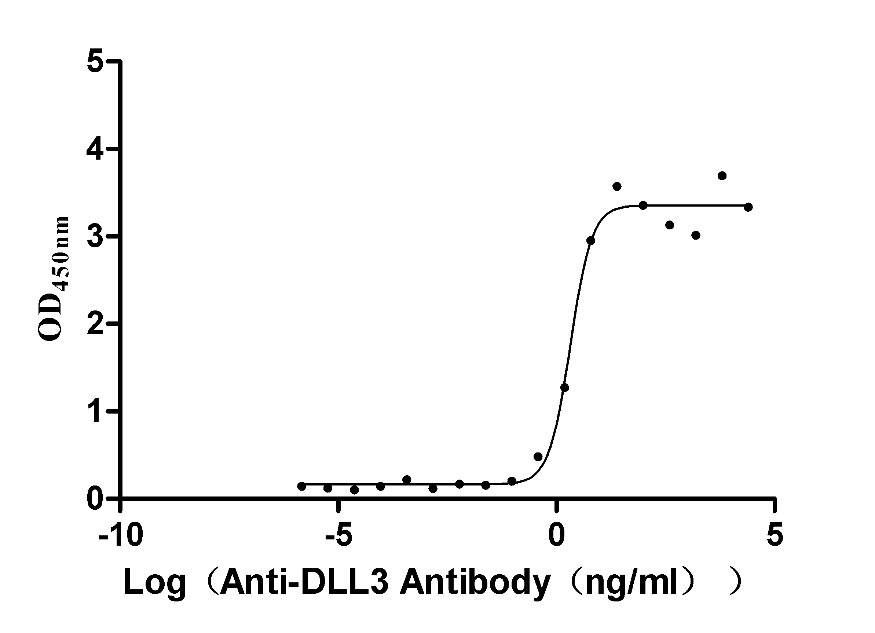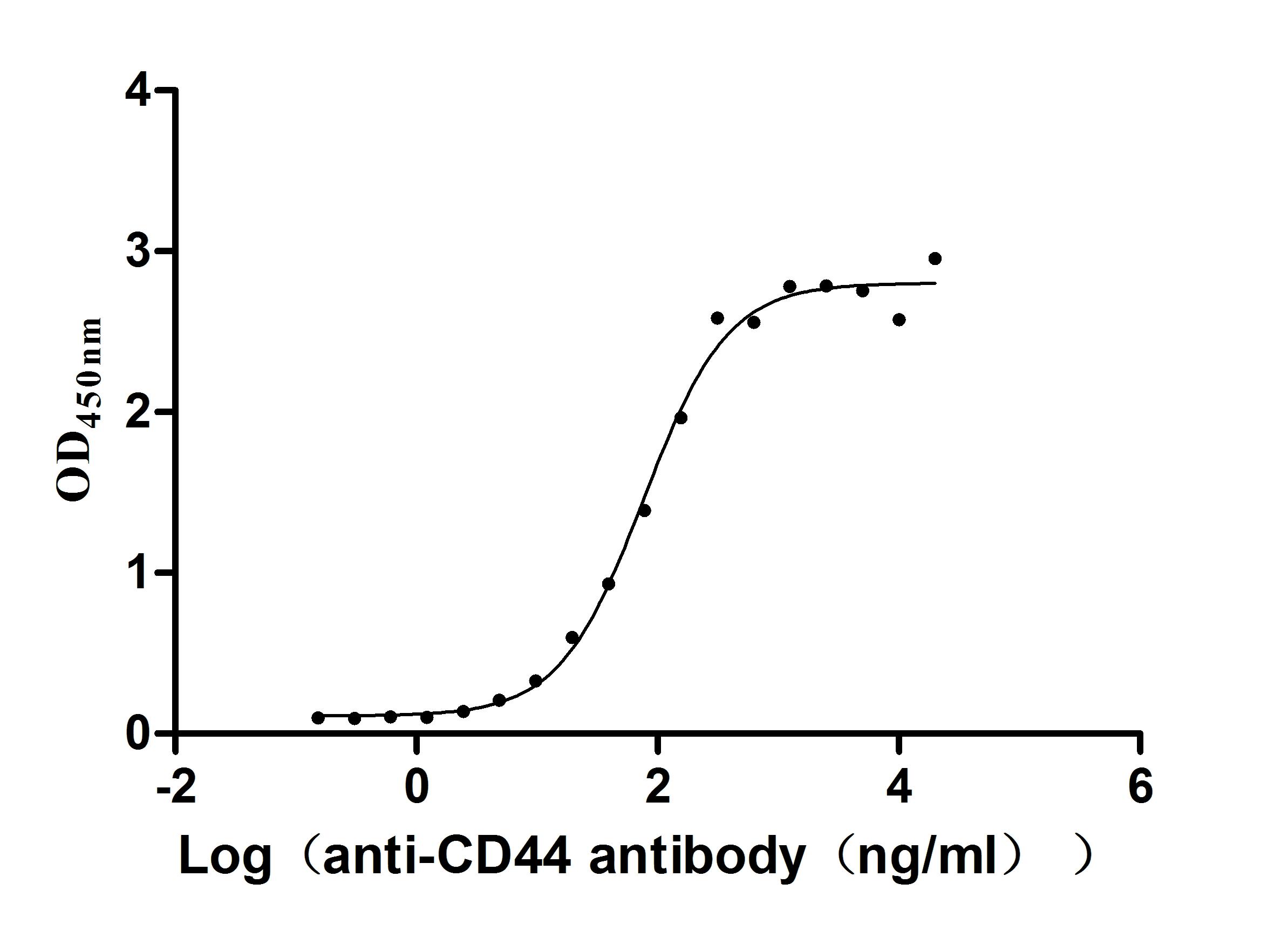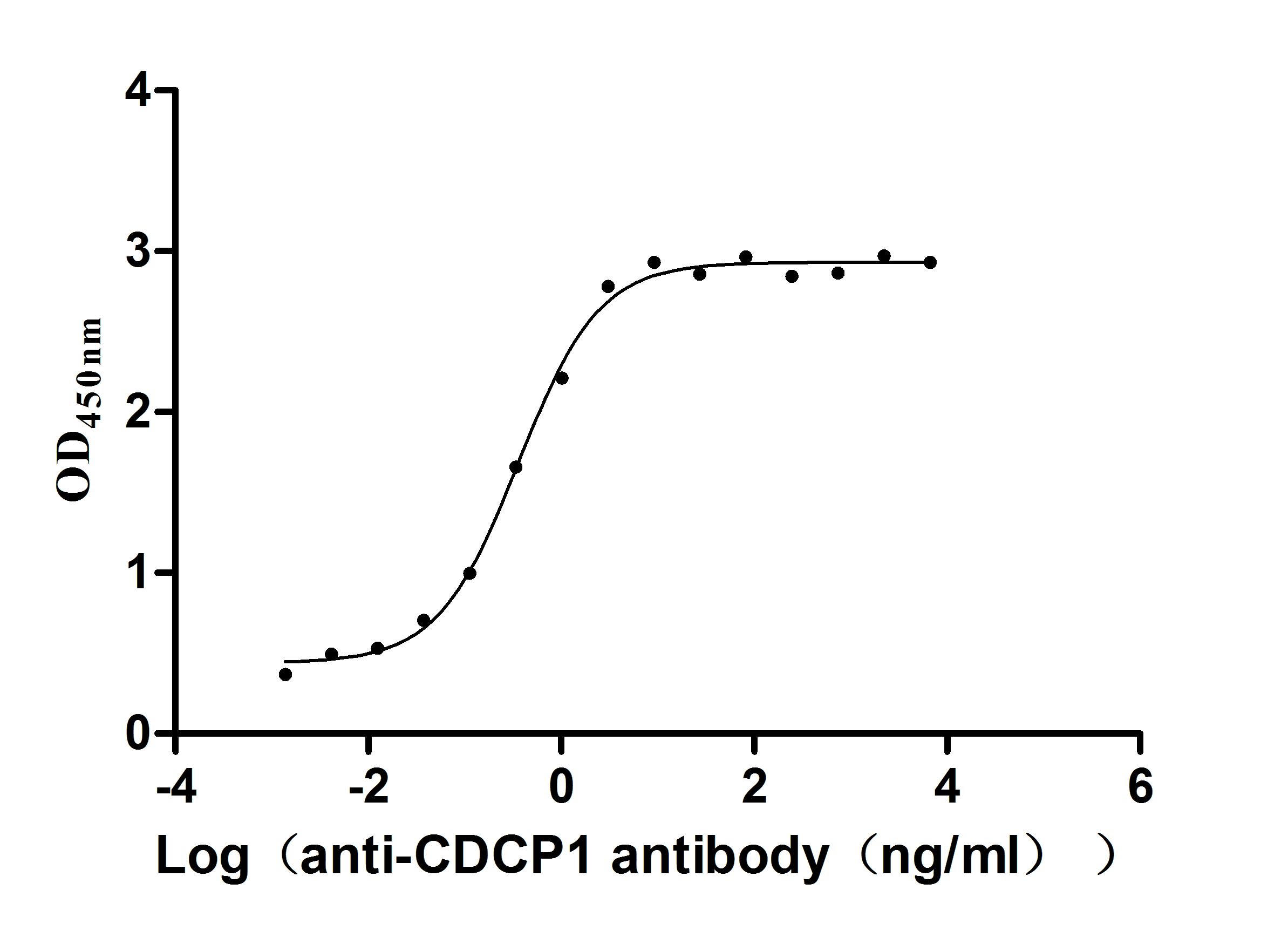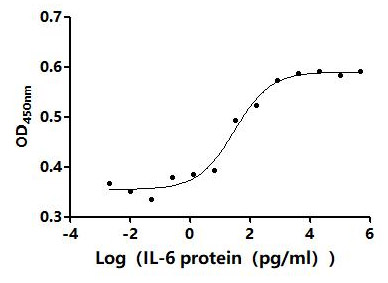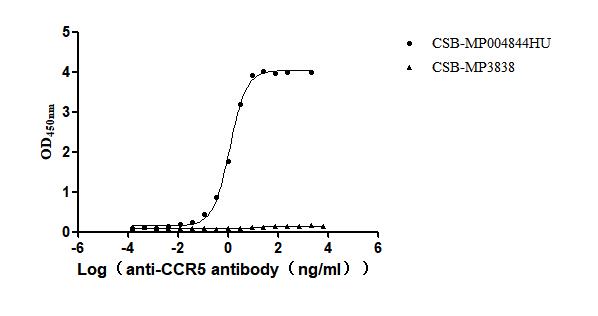Recombinant Mouse Caprin-1 (Caprin1)
-
中文名稱:Recombinant Mouse Caprin-1(Caprin1)
-
貨號:CSB-YP730665MO
-
說明書:
-
規(guī)格:
-
來源:Yeast
-
其他:
-
中文名稱:Recombinant Mouse Caprin-1(Caprin1)
-
貨號:CSB-EP730665MO
-
說明書:
-
規(guī)格:
-
來源:E.coli
-
其他:
-
中文名稱:Recombinant Mouse Caprin-1(Caprin1)
-
貨號:CSB-EP730665MO-B
-
說明書:
-
規(guī)格:
-
來源:E.coli
-
共軛:Avi-tag Biotinylated
E. coli biotin ligase (BirA) is highly specific in covalently attaching biotin to the 15 amino acid AviTag peptide. This recombinant protein was biotinylated in vivo by AviTag-BirA technology, which method is BriA catalyzes amide linkage between the biotin and the specific lysine of the AviTag.
-
其他:
-
中文名稱:Recombinant Mouse Caprin-1(Caprin1)
-
貨號:CSB-BP730665MO
-
說明書:
-
規(guī)格:
-
來源:Baculovirus
-
其他:
產(chǎn)品詳情
-
純度:>85% (SDS-PAGE)
-
基因名:
-
Uniprot No.:
-
別名:Caprin1; Gpiap; Gpiap1; Gpip137; M11s1; Rng105; G5E5; Caprin-1; Cytoplasmic activation- and proliferation-associated protein 1; GPI-anchored membrane protein 1; GPI-anchored protein p137; GPI-p137; p137GPI; Membrane component chromosome 11 surface marker 1; RNA granule protein 105
-
種屬:Mus musculus (Mouse)
-
蛋白長度:Full Length of Mature Protein
-
表達區(qū)域:2-707
-
氨基酸序列PSATSHSGS GSKSSGPPPP SGSSGSEAAA GAAAPASQHP ATGTGAVQTE AMKQILGVID KKLRNLEKKK GKLDDYQERM NKGERLNQDQ LDAVSKYQEV TNNLEFAKEL QRSFMALSQD IQKTIKKTAR REQLMREEAE QKRLKTVLEL QYVLDKLGDD DVRTDLKQGL SGVPILSEEE LSLLDEFYKL VDPERDMSLR LNEQYEHASI HLWDLLEGKE KPVCGTTYKA LKEIVERVFQ SNYFDSTHNH QNGLCEEEEA ASAPTVEDQV AEAEPEPAEE YTEQSEVEST EYVNRQFMAE TQFSSGEKEQ VDEWTVETVE VVNSLQQQPQ AASPSVPEPH SLTPVAQSDP LVRRQRVQDL MAQMQGPYNF IQDSMLDFEN QTLDPAIVSA QPMNPTQNMD MPQLVCPQVH SESRLAQSNQ VPVQPEATQV PLVSSTSEGY TASQPLYQPS HATEQRPQKE PMDQIQATIS LNTDQTTASS SLPAASQPQV FQAGTSKPLH SSGINVNAAP FQSMQTVFNM NAPVPPANEP ETLKQQSQYQ ATYNQSFSSQ PHQVEQTELQ QDQLQTVVGT YHGSQDQPHQ VPGNHQQPPQ QNTGFPRSSQ PYYNSRGVSR GGSRGARGLM NGYRGPANGF RGGYDGYRPS FSNTPNSGYS QSQFTAPRDY SGYQRDGYQQ NFKRGSGQSG PRGAPRGRGG PPRPNRGMPQ MNTQQVN
-
蛋白標(biāo)簽:Tag?type?will?be?determined?during?the?manufacturing?process.
The tag type will be determined during production process. If you have specified tag type, please tell us and we will develop the specified tag preferentially. -
產(chǎn)品提供形式:Lyophilized powder Warning: in_array() expects parameter 2 to be array, null given in /www/web/cusabio_cn/public_html/caches/caches_template/default/content/show_product_protein.php on line 662
Note: We will preferentially ship the format that we have in stock, however, if you have any special requirement for the format, please remark your requirement when placing the order, we will prepare according to your demand. -
復(fù)溶:We recommend that this vial be briefly centrifuged prior to opening to bring the contents to the bottom. Please reconstitute protein in deionized sterile water to a concentration of 0.1-1.0 mg/mL.We recommend to add 5-50% of glycerol (final concentration) and aliquot for long-term storage at -20℃/-80℃. Our default final concentration of glycerol is 50%. Customers could use it as reference.
-
儲存條件:Store at -20°C/-80°C upon receipt, aliquoting is necessary for mutiple use. Avoid repeated freeze-thaw cycles.
-
保質(zhì)期:The shelf life is related to many factors, storage state, buffer ingredients, storage temperature and the stability of the protein itself.
Generally, the shelf life of liquid form is 6 months at -20°C/-80°C. The shelf life of lyophilized form is 12 months at -20°C/-80°C. -
貨期:Delivery time may differ from different purchasing way or location, please kindly consult your local distributors for specific delivery time.Note: All of our proteins are default shipped with normal blue ice packs, if you request to ship with dry ice, please communicate with us in advance and extra fees will be charged.
-
注意事項:Repeated freezing and thawing is not recommended. Store working aliquots at 4°C for up to one week.
-
Datasheet :Please contact us to get it.
靶點詳情
-
功能:May regulate the transport and translation of mRNAs of proteins involved in synaptic plasticity in neurons and cell proliferation and migration in multiple cell types. Binds directly and selectively to MYC and CCND2 RNAs. In neuronal cells, directly binds to several mRNAs associated with RNA granules, including BDNF, CAMK2A, CREB1, MAP2, NTRK2 mRNAs, as well as to GRIN1 and KPNB1 mRNAs, but not to rRNAs.
-
基因功能參考文獻:
- Thus, RNG105 has an essential role, as a key regulator of dendritic mRNA localization, in long-term memory formation. PMID: 29157358
- Behavioral analysis of RNG105 heterozygous mice showed reduced social interaction and attenuated response to novelty. PMID: 26865403
- Fragile mental retardation protein interacts with the RNA-binding protein Caprin1 in neuronal RiboNucleoProtein complexes PMID: 22737234
- Stress-granule-associated protein Caprin-1 is downregulated by Pou4f3. PMID: 21402877
- The present study first demonstrates the in vivo role of RNG105 in the dendritic localization of mRNAs PMID: 20861386
- Overexpression of a fusion protein of enhanced green fluorescent protein and caprin-1 induces dose-dependent suppression of the proliferation of NIH-3T3 cells, consistent with the notion that caprin-1 plays a role in cellular activation or proliferation. PMID: 14764709
顯示更多
收起更多
-
亞細胞定位:Cytoplasm, cytosol. Cell projection, dendrite. Cell projection, lamellipodium.
-
蛋白家族:Caprin family
-
組織特異性:Highest expression in thymus, spleen and brain (at protein level). Lower levels in kidney, muscle and liver (at protein level).
-
數(shù)據(jù)庫鏈接:
Most popular with customers
-
Recombinant Macaca fascicularis Delta-like protein 3 (DLL3), partial (Active)
Express system: Mammalian cell
Species: Macaca fascicularis (Crab-eating macaque) (Cynomolgus monkey)
-
Recombinant Macaca fascicularis CD44 antigen (CD44), partial (Active)
Express system: Mammalian cell
Species: Macaca fascicularis (Crab-eating macaque) (Cynomolgus monkey)
-
Recombinant Human CUB domain-containing protein 1 (CDCP1), partial (Active)
Express system: Mammalian cell
Species: Homo sapiens (Human)
-
-
Recombinant Human C-C chemokine receptor type 5 (CCR5)-VLPs (Active)
Express system: Mammalian cell
Species: Homo sapiens (Human)


